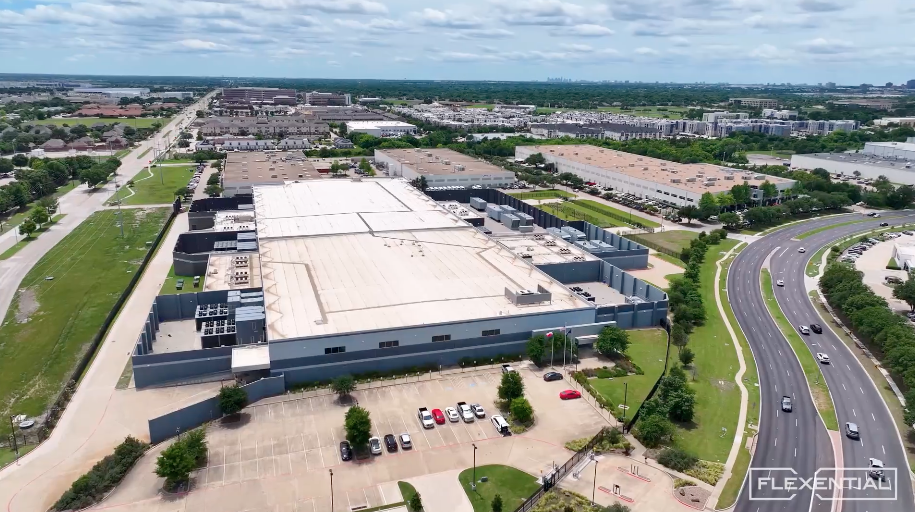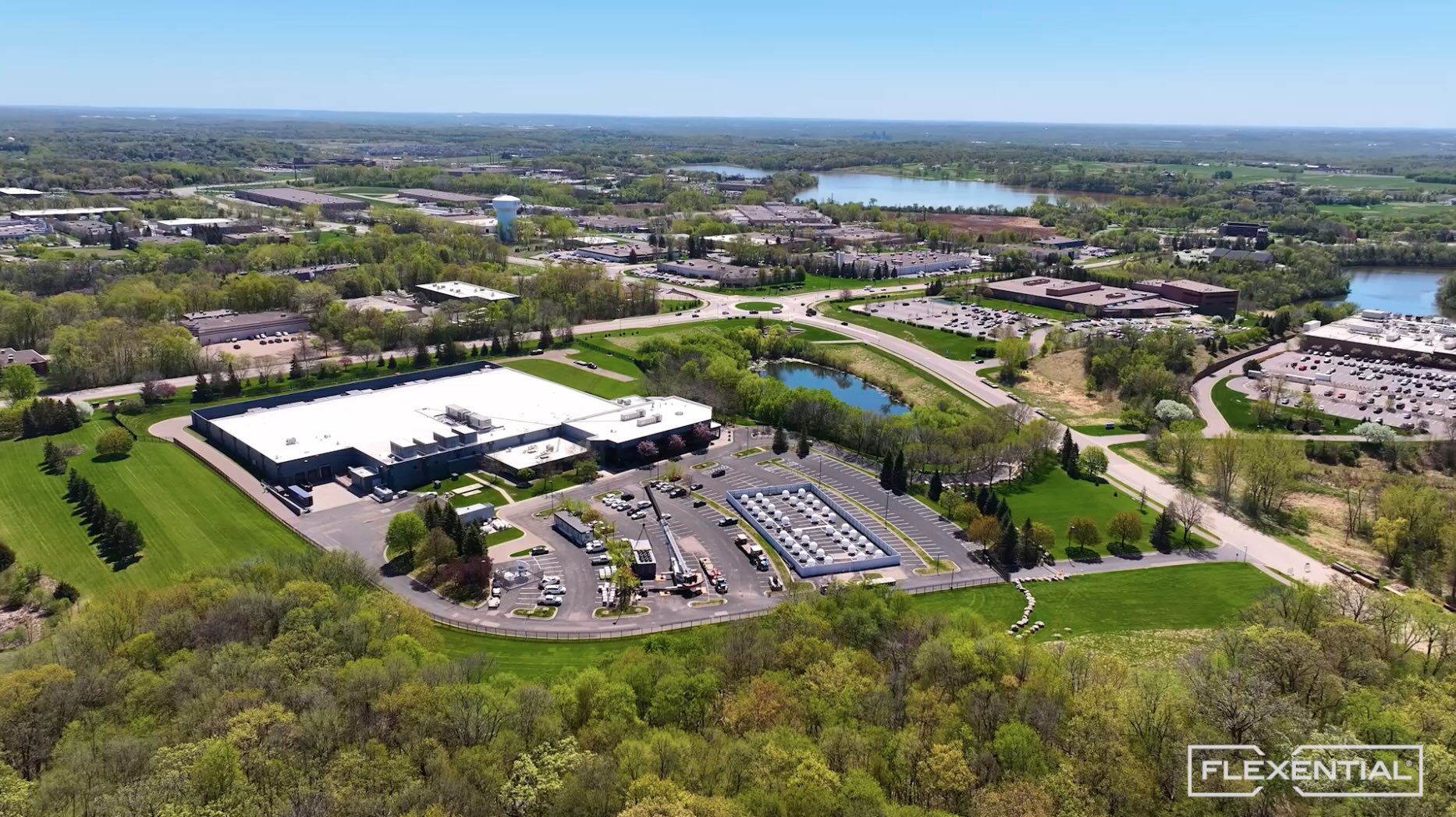Edge data centers: Everything you need to know
In today's fast-paced digital world, the demand for quicker data processing and reduced latency has given rise to the concept of edge computing. This paradigm shift aims to bring data processing closer to the source of data generation, thereby enhancing speed and efficiency. Enter the edge data center (EDC), a pivotal component in realizing this goal. But what exactly is an edge data center, and why is it becoming increasingly crucial in our digital age?

The concept of edge computing
Edge computing represents a significant evolution in data processing, enabling real-time data analysis and decision-making by processing data closer to its source. Edge computing minimizes latency and bandwidth use by performing data processing at the edge of the network, nearer to where data is generated.
The role and importance of data centers in edge computing
Data centers, especially edge data centers, are the backbone of edge computing. They provide the necessary infrastructure for data processing and storage at or near the source of data generation. This proximity significantly reduces latency, enhances application performance, and improves user experiences in real-time applications such as IoT, autonomous vehicles, and smart city technologies.
Understanding edge data centers
What is an edge data center?
An edge data center is a small footprint facility located close to the edge of the network. Its primary role is to deliver networked, compute and cached content to end-users with minimal latency. EDCs are strategically placed in locations that require immediate data processing, away from centralized data centers.
Key features of edge data centers
EDCs are characterized by their proximity to end-users, reduced size, and the ability to provide services such as content delivery and processing with minimal delay. They are designed to support the growing demand for real-time computing and data analysis across various industries.
Why edge data centers are crucial in today's digital age
The explosion of data from mobile devices, IoT applications, and other digital technologies necessitates the need for faster processing and analysis. Edge data centers enable businesses and consumers to benefit from quicker, more reliable services.
What is the role of edge data centers?
Meeting latency demands
In applications where even a millisecond of delay can be critical, such as in financial trading or emergency services, EDCs provide the speed necessary to process and analyze data in real time.
Bringing data closer to users
By decentralizing data processing, EDCs ensure that data does not have to travel long distances to be processed, thus reducing latency and bandwidth costs.
Facilitating IoT and other real-time applications
The proliferation of IoT devices and applications relies on the immediate processing of data. EDCs make this possible, enabling smarter cities, industries, and homes.
Deployment of edge data centers
Various deployment models of edge data centers
Deployment models vary from fully functional micro data centers that can operate independently to smaller facilities that complement existing cloud or centralized data center infrastructures. Each model is tailored to meet specific regional and application needs.
Challenges in edge data center deployment
Deploying EDCs involves addressing challenges such as site selection, scalability, security, and integration with existing networks. However, with strategic planning and implementation, these challenges can be overcome to leverage the full potential of edge computing.
Architectural design of edge data centers
EDCs are designed to be agile and responsive to the needs of a dynamic digital environment where technology and user demands evolve rapidly.
Flexibility: EDCs often employ a modular design, allowing components, or even entire data center modules, to be prefabricated and rapidly deployed on-site. This plug-and-play approach not only speeds up the deployment process but also allows for a flexible arrangement of resources. Modules can be added, removed, or reconfigured according to the changing needs of the network or the technological landscape.
Scalability: The modular nature of EDCs inherently supports scalability. As the demand for processing power and storage at the edge of the network grows, additional modules can be easily integrated into the existing infrastructure. This ensures that the EDC can grow incrementally, reducing the need for large upfront investments while still catering to the increasing load.
Security: With data processing happening closer to the source, the importance of security in EDCs cannot be overstated. The architectural design includes advanced physical security measures, such as surveillance, biometric access controls, and perimeter defenses. Moreover, network security is reinforced using encryption, firewalls, intrusion detection systems, and regular security audits to ensure the integrity and confidentiality of the sensitive data transmitted.
Infrastructure and architectural essentials
The infrastructure of EDCs is built around core essentials that enable them to operate efficiently and reliably.
Power efficiency and cooling solutions: EDCs are equipped with power systems designed for high efficiency and reliability, including the use of renewable energy sources and high-efficiency UPS systems. Cooling solutions in EDCs are innovative, often employing advanced methods such as in-row cooling, liquid cooling, or even using ambient outside air, significantly reducing the carbon footprint.
Network integration: EDCs are seamlessly integrated into the existing network infrastructure. They are strategically located to reduce latency, often on the outskirts of cities or near major user hubs. They are connected through high-speed, low-latency networking technologies, such as fiber optics or 5G networks.
Automation and management: The use of sophisticated management software is crucial in EDCs. This software enables remote monitoring and management, automation of routine tasks, and predictive analytics to anticipate and respond to potential issues before they impact operations.
Comparison between traditional data center and edge data center architectures
Traditional data centers and EDCs differ significantly in their architectural philosophies:
Centralized vs. distributed: Traditional data centers are typically centralized facilities designed to handle data processing for an entire organization or multiple organizations. EDCs, on the other hand, are part of a distributed architecture where processing capabilities are spread across multiple locations closer to data generation points.
Scale and scope: While traditional data centers, depending on tier classification, are often large-scale facilities designed to handle vast amounts of data, EDCs are smaller and focused on immediate, localized processing needs. This allows EDCs to offer reduced latency for the applications they support.
Deployment speed and flexibility: Traditional data centers can take a significant amount of time and investment to build and become operational. EDCs, with their modular design, can be deployed much more quickly and can be scaled or reconfigured as needed with minimal disruption.
Resilience and redundancy: EDCs offer increased resilience due to their distributed nature. While a traditional data center may be a single point of failure, EDCs can provide failover capabilities, with processing tasks seamlessly transferring to another EDC in the event of a failure.
Advantages of edge data centers
- Reduction in latency: By processing data closer to the source, EDCs dramatically reduce the time it takes for data to travel, resulting in faster response times.
- Increased data security and privacy: Local data processing minimizes the risk of data breaches during transmission, enhancing data security.
- Improved service availability: EDCs can operate independently of centralized networks, ensuring services remain available even if the main data center encounters issues.
- Efficient data handling and management: With local data processing, EDCs reduce the bandwidth required for data transmission, leading to cost savings and improved efficiency.
Implementation of edge data centers
Implementing an edge data center involves careful planning to ensure compatibility with existing IT infrastructure, scalability for future growth, and adherence to security standards. Potential pitfalls include underestimating the complexity of integration and the need for robust management systems to oversee operations across dispersed locations.
Key steps in implementation
- Strategic planning: The first step is to establish a clear edge strategy plan that includes objectives, expected benefits, and how the edge data center will fit into the existing IT and business landscape. This involves conducting a thorough needs analysis and understanding the specific applications and services that the EDC will support.
- Site selection: Choosing the right location for an EDC is critical. Factors to consider include proximity to users for reduced latency, local infrastructure like power and connectivity options, and even the physical climate, which can impact cooling considerations.
- Design and architecture: The design phase should focus on the modular and scalable nature of the EDC to ensure that it can adapt to future needs. This includes selecting the right mix of hardware and software that can support the required services and applications.
- Integration with existing systems: Seamless integration with current IT infrastructure is vital. This includes ensuring compatibility between new edge applications and existing data center and cloud environments.
- Security measures: Implement comprehensive security measures that span physical, network, and application layers. This also means establishing protocols for data privacy and compliance with relevant regulations.
- Deployment: Careful execution of the deployment plan is essential. This often involves coordination with various vendors and partners to install and configure hardware, software, and networking components.
- Testing and optimization: Before going live, conduct extensive testing to ensure the EDC performs as expected. Post-deployment, continuous optimization should be carried out to improve efficiency and performance.
- Management and operations: Develop robust management systems for the day-to-day operations of the EDC. This includes monitoring systems, support processes, and incident response plans.
Pitfalls to avoid during implementation
- Underestimating complexity: The complexity of integrating an EDC within the broader IT ecosystem can be significant. It's crucial not to underestimate the technical challenges and resource requirements.
- Neglecting scalability and flexibility: Failing to plan for scalability can lead to challenges as demand grows. The infrastructure should be designed to scale up or down as needed without significant overhauls.
- Ignoring latency requirements: One of the main reasons for implementing an EDC is to reduce latency. Not paying enough attention to this aspect can undermine the primary benefit of edge computing.
- Compromising on security: Security is often more challenging to manage in distributed environments. A breach in security at the edge can have far-reaching consequences, so it's imperative to have strong security controls in place.
- Overlooking power and cooling needs: EDCs require efficient power and cooling solutions, tailored to their smaller size but potentially high-density computing needs. Overlooking these needs can lead to increased operational costs and reduced reliability.
- Failing to align with business goals: Technology implementations should always align with business objectives. An EDC is no exception; it should directly support the strategic goals of the organization.
- Skimping on testing: Insufficient testing can lead to undetected issues that might disrupt services when the EDC goes live. Rigorous testing is essential to ensure a smooth launch.
- Poor vendor management: Working with multiple vendors can lead to complications if not managed correctly. It's important to have clear contracts, service level agreements (SLAs), and a single point of accountability.
By following these steps and avoiding common pitfalls, organizations can successfully implement edge data centers to enhance their IT capabilities and better serve their customers. The aim is to create a responsive, efficient, and secure edge infrastructure that supports the real-time, data-intensive needs of modern digital applications.
The future of edge data centers
As we look to the future, EDCs are set to anchor a new digital reality characterized by interconnection, immediacy, and sustainability. These interconnected data centers are driving the transition to hyperlocal services, ensuring that data processing is as close to the source as possible. This is vital for delivering real-time services that modern consumers demand, as AI-driven analytics and machine learning are becoming more embedded in EDC operations, facilitating smarter and more autonomous data centers. Concurrently, the integration of 5G technology into EDCs is revolutionizing their capabilities, offering unprecedented connectivity that enables a broad spectrum of next-generation applications. These advancements, however, bring forth challenges, notably in security and interoperability—challenges that are being met with innovative, robust solutions.
The influence of EDCs extends beyond technology; they are reshaping urban landscapes and healthcare, making cities smarter and medical care more accessible through telehealth advancements. To maintain this momentum and ensure future readiness, strategic partnerships and a commitment to continuous learning are imperative. Staying agile and well-informed of emerging technologies will enable businesses and communities to fully leverage the potential of EDCs, ensuring that they remain at the forefront of this digital evolution.
Ready to redefine your digital landscape?Forrester’s Top 10 Trends in Edge Computing & IoT, presented by Flexential, gives you the foresight to excel in the new tech era. Dive into the trends today and shape your tomorrow. Get the complimentary Forrester report now. |
Flexential and our edge data centers
Flexential offers advanced local edge data center and interconnection solutions designed to meet the dynamic needs of today's digital landscape. Our EDCs are strategically located to provide low-latency, high-bandwidth services, ensuring that your data is processed and analyzed with speed and precision. With Flexential, businesses can leverage what edge data centers offer all the benefits of edge computing, including improved performance, enhanced security, and increased operational efficiency.
Ready to explore how Flexential edge data centers can transform your business? Schedule a consultation today and discover the difference that edge computing can make for your operations. Let us help you navigate the edge landscape and unlock the full potential of your digital initiatives.






